www.marijamarkovic.com
Artist BioMarija Marković was born in Serbia and currently works and lives in New York.
2017 MFA Fine Art Thesis Walkthrough- Marija Markovic from Parsons Art, Media & Technology on Vimeo.
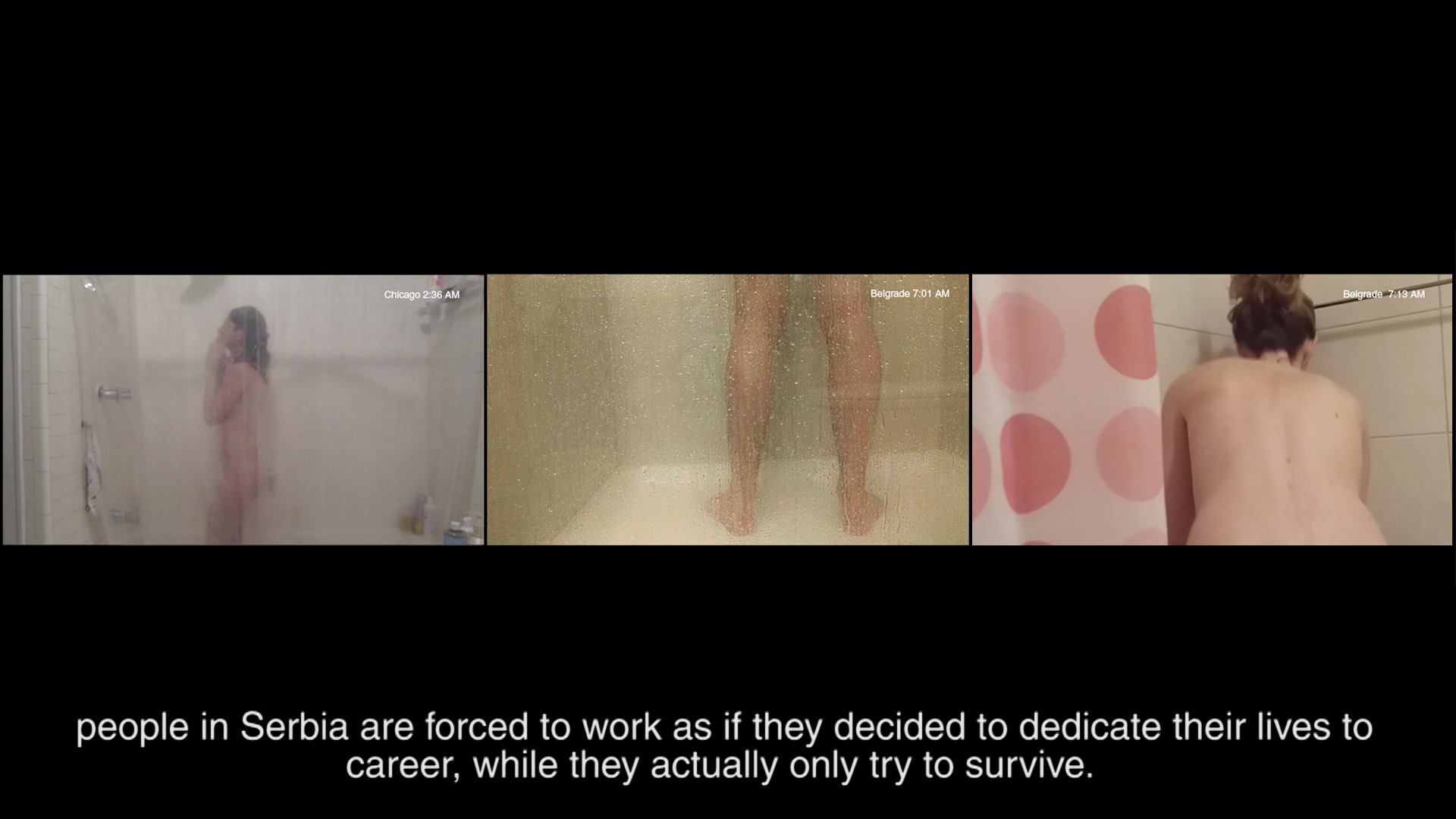
Dokolica, 2017, three channel video, 35 minutes
A video series Dokolica explores relationship between work and leisure time in the newly restructured Serbian socio-economic system. The multi-channel video installation explores an untranslatable word from the Serbian language—a word that points specifically to the ways that the time of “non-work” is understood as both necessary and “productive” in the post-socialist context of Serbia. While the word could technically translate as “free-leisure time” in English, once translated it loses its historical context.
The piece is composed of sixteen distinct vignettes: each is a recording of one of my friends filming themselves while taking a shower. The audio element of the work is both the sound of water running out of pipes and people in the video defining and discussing the word dokolica in Serbian with English subtitles. The central concept of the word, however, deliberately remains untranslated.
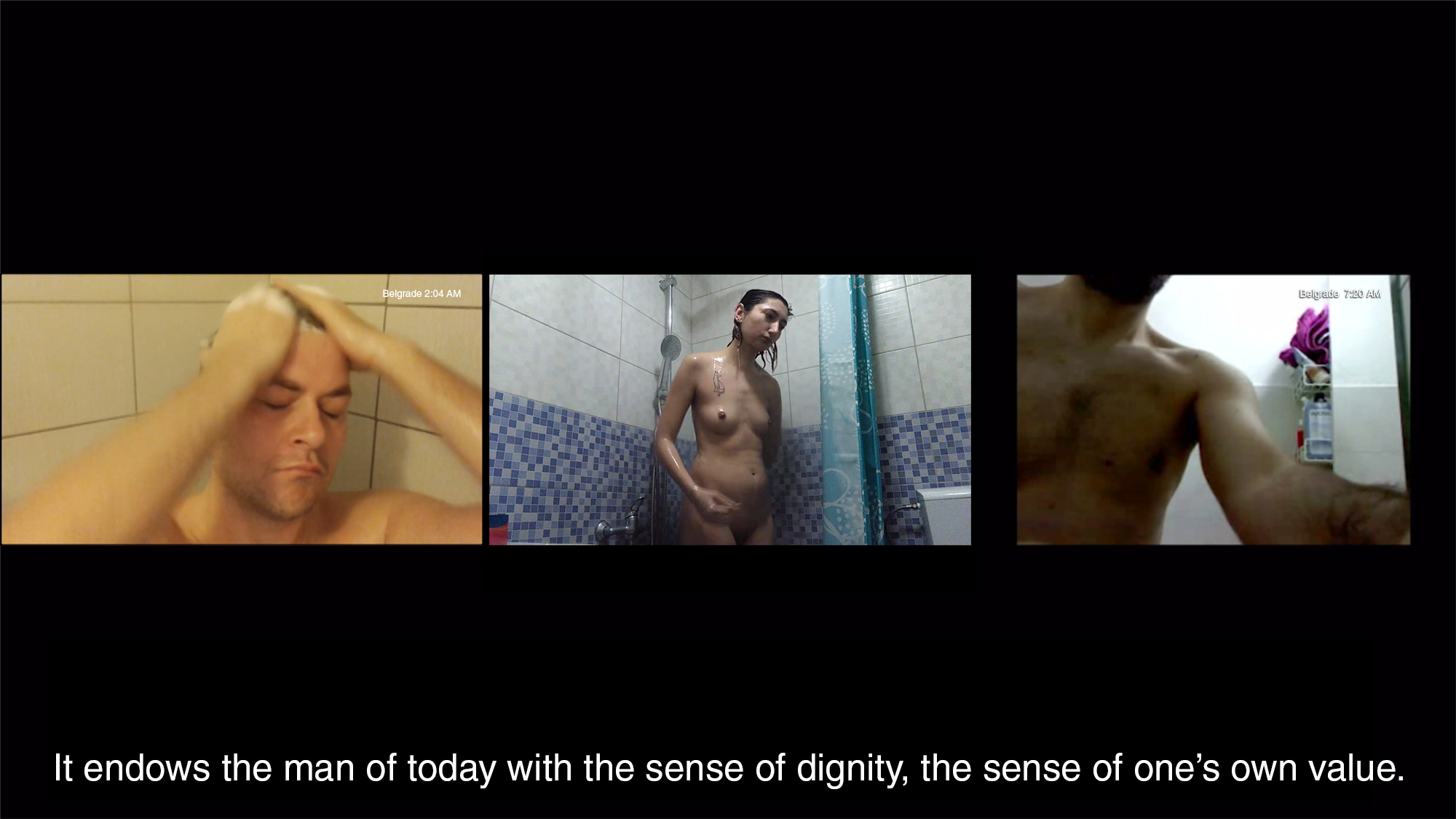
Dokolica, 2017, three channel video, 35 minutes
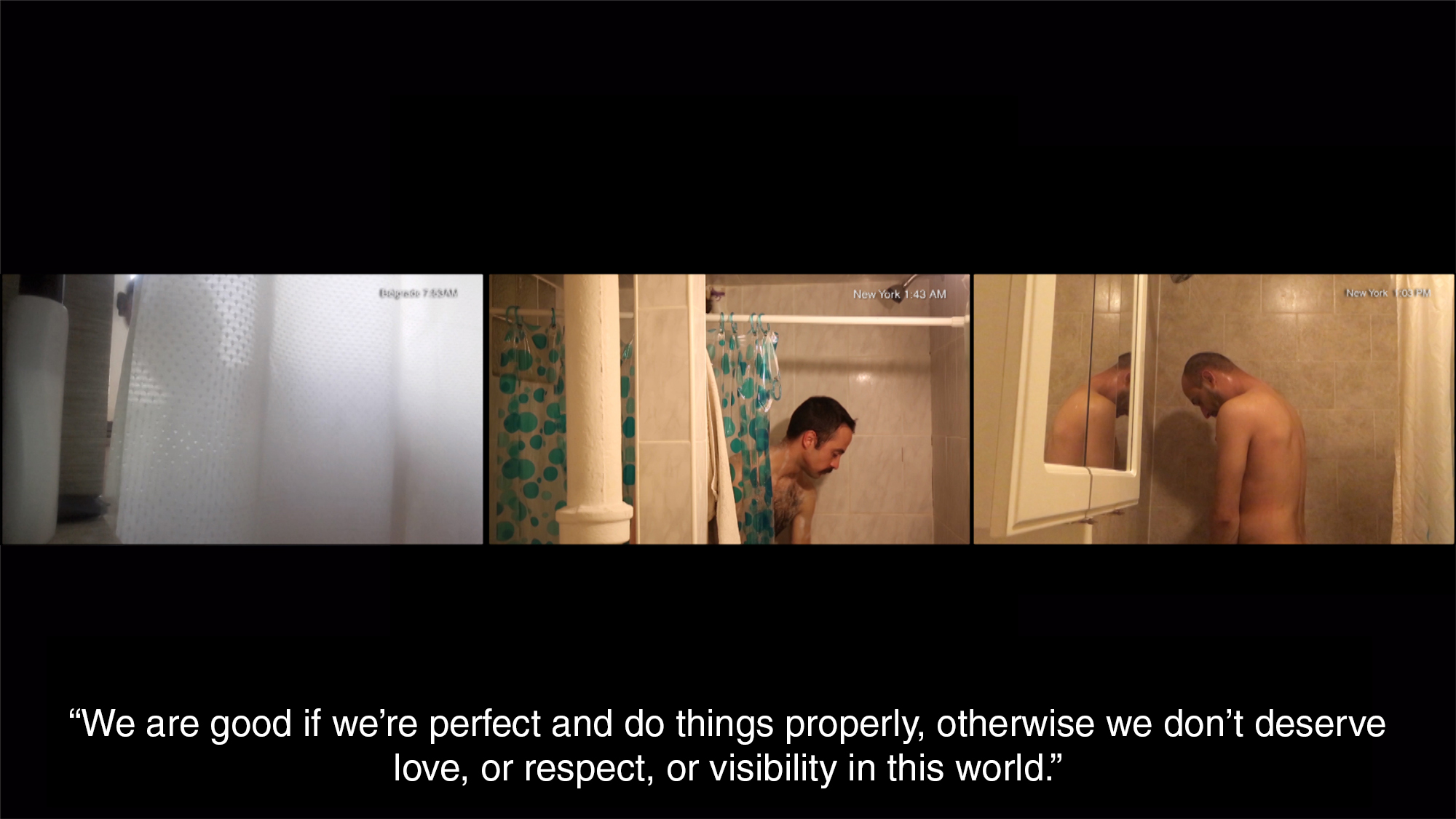
Dokolica, 2017, three channel video, 35 minutes

The Cabbage, 2016 video, loop
In my recent video work, The Cabbage (2016), a well-dressed man of my generation juggles cabbages in the parking lot of a well-known supermarket chain. The supermarket and its surrounding architecture belong to the past decade, an era marked by state-sanctioned corruption that impoverished Serbian citizens under the guise of nationalism, and in accordance with the values of neoliberal democracy. At a key point, the actor’s body is deliberately truncated, drawing the viewer’s attention to the background: an enormous -50% discount sign and massive commercial logos. Specifically, the painted logos refer to Maxi, the supermarket chain that was established by a local 1990’s war profiteer, and the Lion, a logo of the Belgian company Delhaize that later bought Maxi in 2011. The aim is to emphasize the socio-economic history of this site and to show the normalized everyday juxtapositions of an unresolved past and an uncertain present. The loop of the video, the loop of his movement and the architecture in the video emphasize the claustrophobic reality of existing in this country.
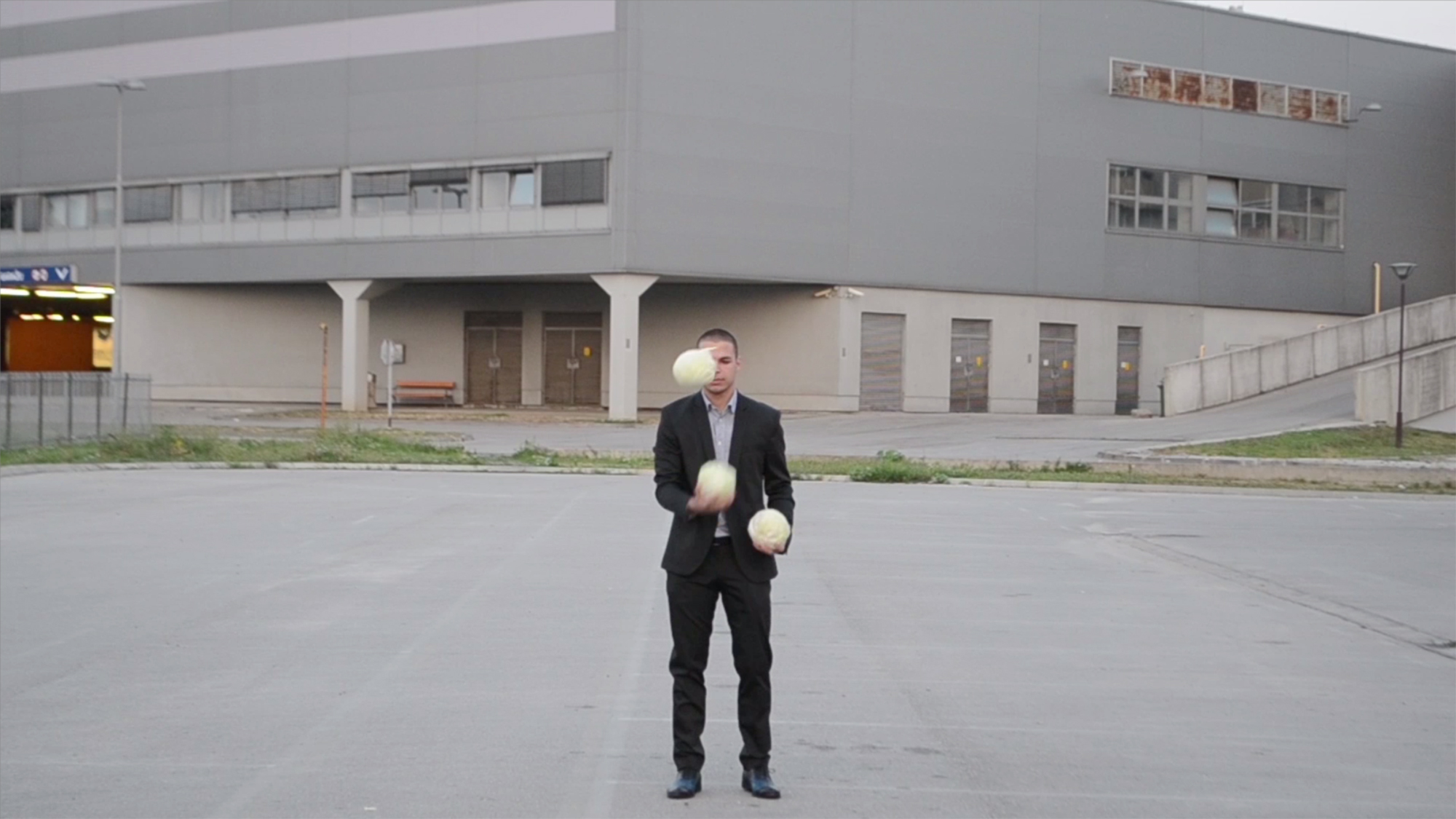
The Cabbage, 2016 video, loop
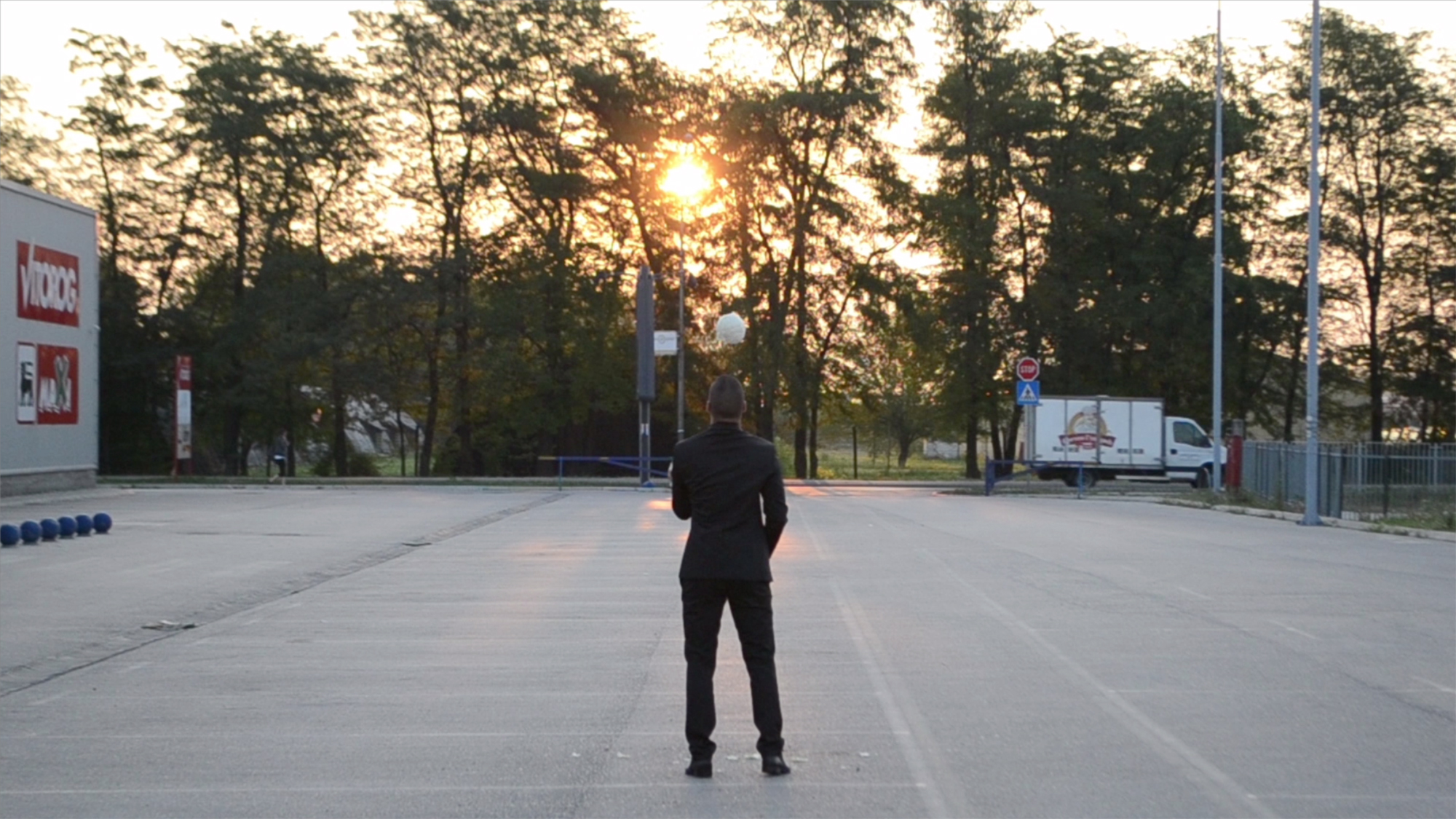
The Cabbage, 2016 video, loop

The Cabbage, 2016 video, loop
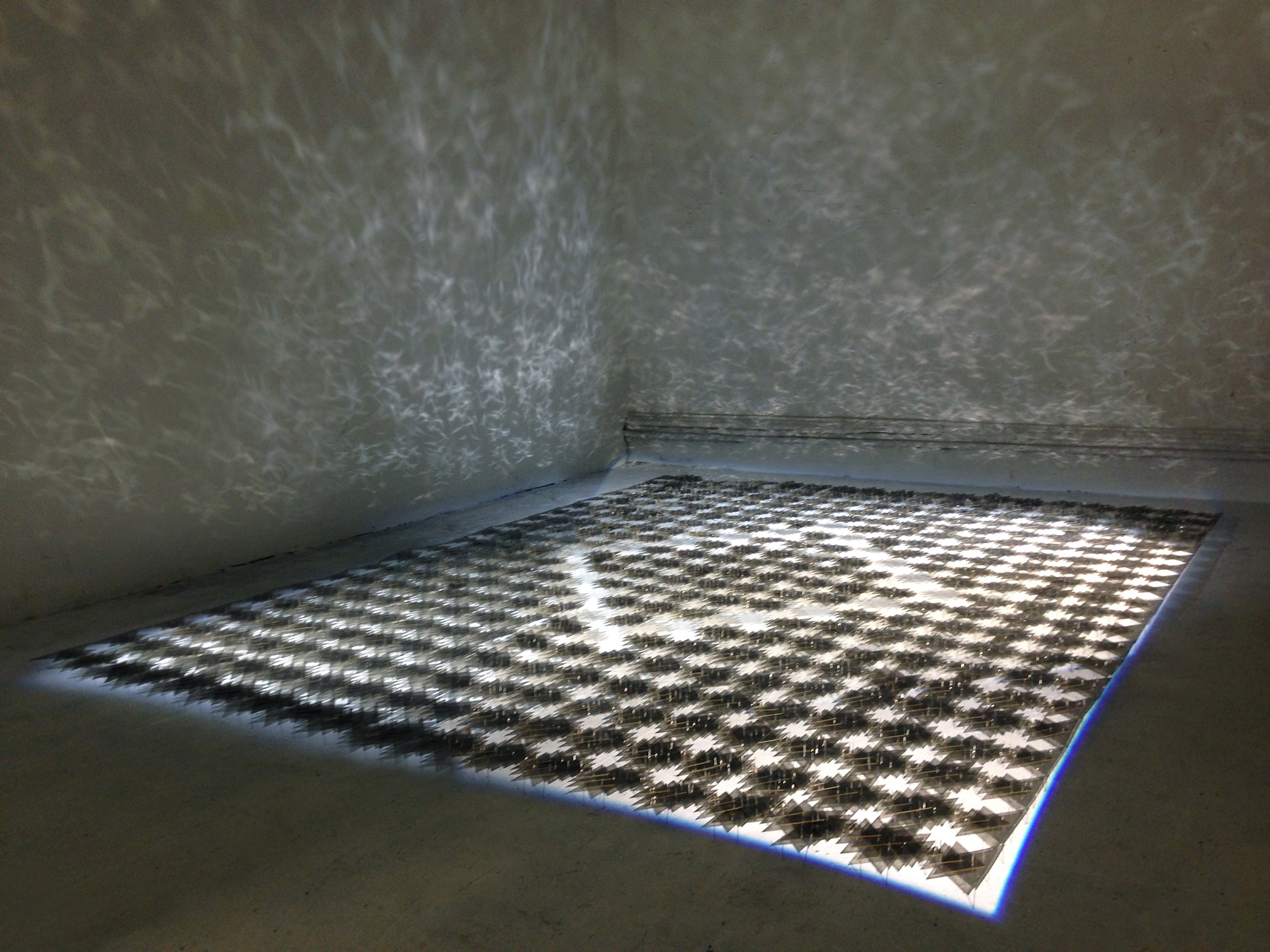
The Carpet, 2016, light installation; Mylar, needles
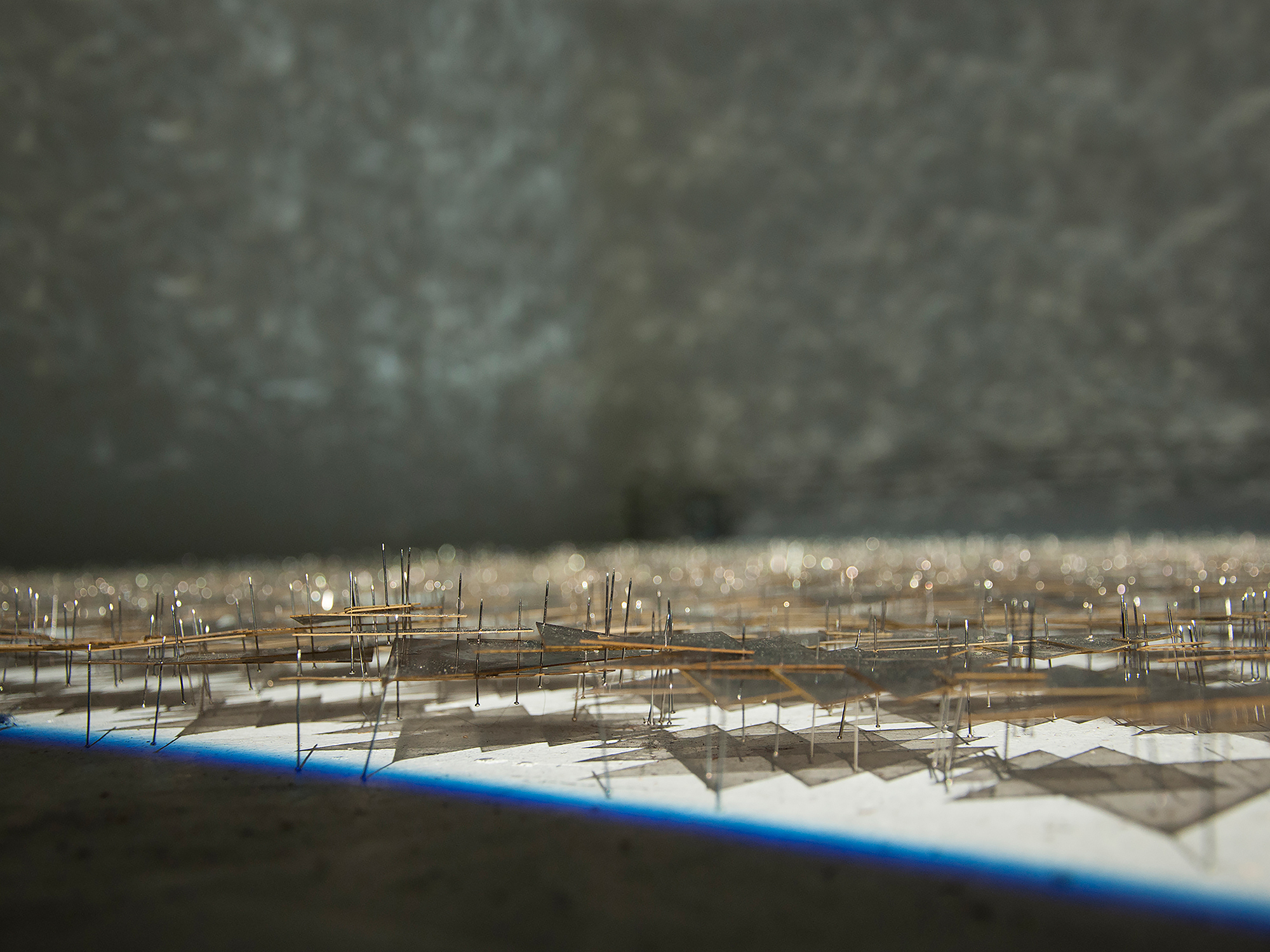
The Carpet, 2016, light installation; Mylar, needles
My interdisciplinary art practice is shaped by my position as part of the current generation of Serbian millennial artists. I came of age during an era of war and uncertain socio-economic relations in a country that went through a long and difficult transition from socialism to capitalism. This environment produced a politically indifferent generation for whom waiting became a permanent status. Like many in this situation, I often feel redundant, futile, and excluded by a political environment that has few resources and a limited history of supporting art. My videos and installations respond to this context through explorations of exclusion, isolation, waiting, confinement, and absurdity that are always in relation to the friction between socialism and capitalism. I specifically explore the violence and complexity of the transition itself and possibilities that exist within that space, and I question what that transition reveals about the present.


